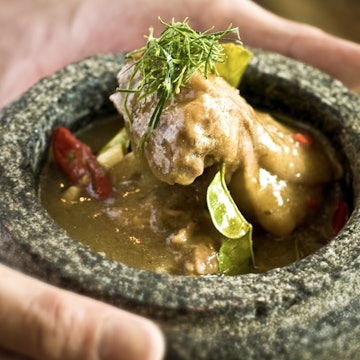
10 incredible food escapes (and what to eat along the way)

Jun 30, 2025 • 12 min read

Okame sushi restaurant in Tokyo. Matt Munro for Lonely Planet
When you eat something so delicious, it becomes the defining memory of your trip, you're forevermore looking to match or beat it in other destinations.
These amazing foodie destinations will guarantee killer meals and adventures to match. Here are 10 destinations and dishes, selected from our book Ultimate Eats, worthy of planning a trip around.

1. Try pinxtos in San Sebastián, Spain
Travelers heading to San Sebastián in Spain will find an incredible city bursting with Basque culture, and surrounded by golden beaches and verdant hills. But there’s one compelling reason to visit that rises above all the others: pintxos. The tiny bites (known as tapas outside of Basque Spain) are best consumed with an accompanying drink, seeing as you’ll be taking this particular culinary journey as a bar-hopping escapade through the streets of San Sebastián.
Originally small open-faced sandwiches, pintxos can today be experienced in many incarnations, from the traditional, piled-high toppings on bread, to molecular-gastronomy renditions with flavors that belie what you see on your plate. Needless to say, almost every local ingredient is represented. It’s hard to list favorites, but the simple examples are often the ones that blow your mind: battered white asparagus, a tuna-and-anchovy tart or maybe mushrooms braised with garlic.
To get the full pintxos and San Sebastián experience, have a lazy day in the city and surrounds, take an afternoon nap and then head out around 9pm. You’ll never be more than a few minutes from your next bar, a whole new menu of tasty treats and an entirely new group of people eating and drinking.
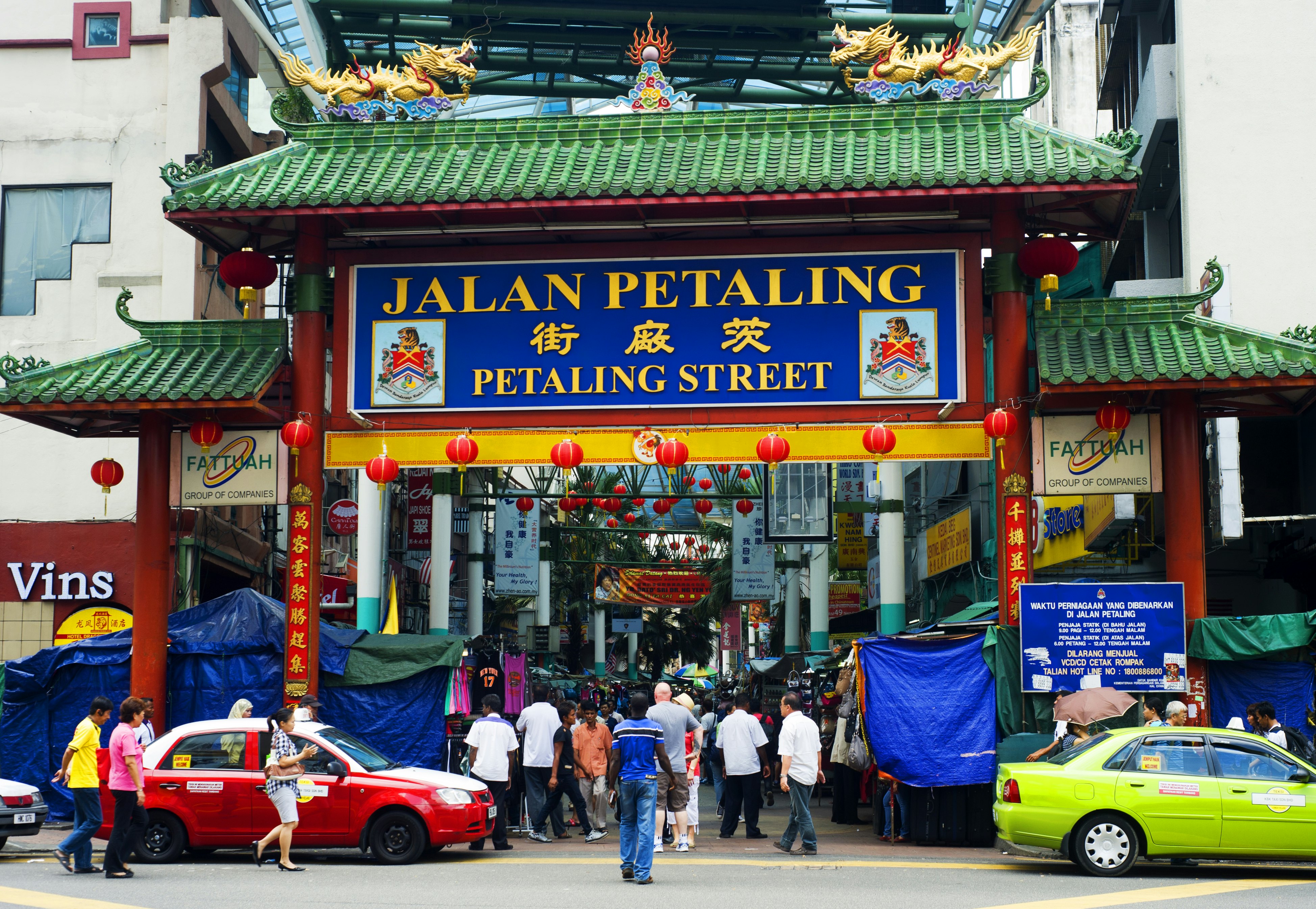
2. Eat curry laksa in Kuala Lumpur, Malaysia
One of the most compelling parts of visiting Kuala Lumpur is wandering through the streets, finding fantastic little hawker centers tucked into the shadows of towering skyscrapers. At this feast for the senses, you’ll truly complete the experience when you sample a rich and creamy curry laksa.
On Madras Lane, just off Petaling St, you’ll come across competing curry laksa stalls vying for your attention. Pick the one with the longest queue. When you have the bowl in your hands, choose a plastic chair (make sure it’s connected to the stall where you bought your laksa or you’ll be in trouble) and begin the swoon-worthy, sweat-inducing process of eating. Come again the next day to try the neighboring stall’s version.
A heady mix of spices and flavors (such as fresh turmeric, galangal, chili, candlenut and shrimp paste) go into the curry mix, which, when combined with coconut milk, creates the signature fiery-orange hue of the noodle soup. Two types of noodles (thin rice and thick egg) – along with shredded chicken, shrimp, cockles, tofu puffs, bean sprouts, a sprinkling of fresh chili and mint and a squeeze of lime – make up the rest of the lip-smacking ingredients. It’s an only-in-Malaysia experience.

3. Take a sushi master class in Tokyo, Japan
Japan offers a truly awe-inspiring array of food experiences, with few as memorable as sampling sushi in Tokyo. We wish we could say that if you’re going to eat sushi in Tokyo, go to Sukiyabashi Jiro or Sushi Saito, but the inordinately long waiting lists to get into either restaurant take the shine off the experience. That said, if your hotel concierge can work their magic, do not miss your chance; the sushi mastery on show at both places is undeniable. In the absence of this bit of good luck, however, there are some superb sushi restaurants in Tokyo that dish up life-changing experiences without the wait. Cases in point include Mantensushi Marunouchi and Jūzō Sushi.
Most top-end sushi chefs will serve their sushi omakase-style, which just means you leave it to them and they will select, prepare and serve your sushi as they see fit. Don’t kick back and relax just yet, though – there are some etiquette rules to abide by. First, when your fresh piece of sushi is placed in front of you, pick it up with your hands rather than chopsticks, and don’t dip it in soy sauce or ask for any extra wasabi. The chef has seasoned the offering, so it is something of an insult to modify the flavor. Between courses, it’s fine to use chopsticks to pick up pickled ginger and the oshibori (hand towel) to clean your fingers.
Take your time and interact with the chef; it’s such an intimate setting and a perfect opportunity to learn more about this ancient culinary art form. Remember to pay attention to the rice as well as the fish. Sushi masters spend years perfecting their rice and consider it as important as all the other ingredients. Soak it all in – the tradition, the skill, the respect, the service, all amounting to the quintessential Japanese dining experience.
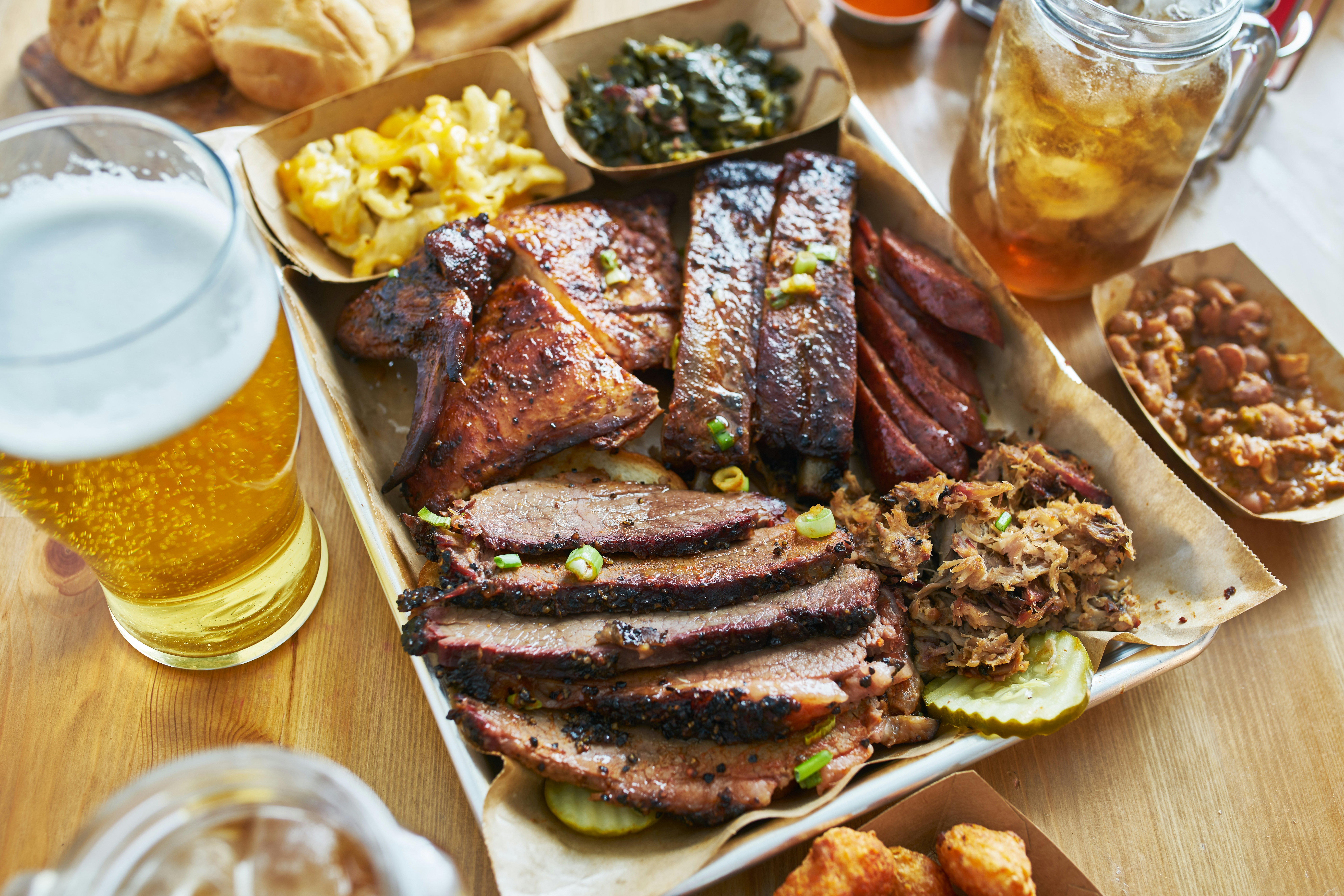
4. Taste tantalizing beef brisket in Texas, USA
Travel to Texas, US, and you’ll quickly learn something important about the locals: they know their barbecued meats. So when they line up for four or more hours to get some, it has to be special. That’s the situation at Austin’s Franklin Barbecue six days a week. Though Franklin’s menu includes pulled pork, ribs, sausage and more, the main attraction is its smoked beef brisket.
The team here keeps it simple, rubbing the meat with a mix of salt and black pepper, then cooking it “low and slow” in oakwood smoke until it’s fall-apart tender and encased in a thin, salty crust. It’s a juicy, smoky Texas classic, judged best-in-class by Texans themselves. You could drive to Lockhart, the state-legislated “Barbecue Capital of Texas,” and be back in the time it takes to get into Franklin’s. But the queue is good fun, you can have a beer and meet some friendly Texans while you wait – and damn, that brisket is good.

5. Travel to Bangkok, Thailand, for som tum
Hit the streets of Bangkok and prepare for sensory overload. While the sights of the Thai capital will astonish you, you’ll have a similarly intense experience when you try som tum, green papaya salad. Som tum is a bang of flavor: it’s sour, salty, sweet and intensely fiery. It’s also texturally extraordinary, combining the crunch of peanuts with cool slivers of pale green papaya and carrot, and small, sweet, juicy shrimp and tomatoes. It’s sold from street vendors all over Thailand but is particularly beloved in the capital, where it feels like there’s a seller on every corner.
Grabbing a plate of som tum on the street, amid all the traffic chaos and the stifling heat, is a rite of passage for visitors to the city, and the epitome of this is the rambling, streetside shack Jay So. But if you would prefer to revere your salad in relative peace and quiet, the restaurant Somtam Nua, at the Siam Center on Siam Sq, has a worthy version – tamed slightly for Western palates but still delicious.

6. Heap toppings on smørrebrød in Copenhagen, Denmark
Stylish Copenhagen lures in travelers looking to soak up contemporary art, admire amazing architecture and shop for vintage clothes. But the perfect food experience in Copenhagen, a Danish open-faced sandwich or smørrebrød, is anything but fussy – just take a slice of rye bread, put some butter on it and then heap it with whatever tasty ingredients you like.
But it’s not really that simple. There are some rules to smørrebrød that help to elevate it to something beyond just a piece of bread with toppings. First, thin toppings go on first, followed by the bulkier kind; second, when eating more than one kind of smørrebrød at once (and this is nearly always the case; good luck stopping at one), you start with the slice that features herring, move on to fish, then meat, then finish with cheese. This carefully choreographed sequence is designed to gently walk your palate through the flavor combinations so that one never overpowers the other.
If you’ve never had smørrebrød, there are some classic combinations you’ll see all over Denmark: for example, pickled herring, onion and dill; mayonnaise, boiled egg, shrimp, dill and lemon; roast beef, pickles, onions and horseradish; and blue cheese, apples and bacon. But these are just a tiny sample of the almost limitless number of toppings.
Copenhagen’s smørrebrød institution, Restaurant Schonnemann, has been serving up the open-faced sandwich since 1877. Here, presentation is so delicate and refined it resembles sushi in style. Try the following for an ultimate smørrebrød experience, otherwise known as the world’s best sandwich degustation: herring marinated in dill cream with capers, onions and a fried egg; smoked salmon and smoked halibut with a crab and mayonnaise salad, tomato and basil; a breaded cutlet of pork with apples, thyme and onions; and, finally, Camembert with blackcurrant jam. And to drink? Why there are only more than 140 different schnapps, aquavit and genevers to choose from. That should do nicely.

7. Savor crayfish by the sea on New Zealand’s South Island
New Zealand’s scenery is a big allure for travelers who want to experience its incredible array of mountains, fields and coastlines. But beyond its eye-candy appeal, this lush environment also produces a wealth of delicious ingredients. On the east coast of New Zealand’s South Island, about two hours’ drive north of Christchurch, is the picturesquely situated town of Kaikōura. The town is famous for the abundance of marine life present offshore – with sperm whales, dolphins and seals often spotted close to land – with its name deriving from the Māori words kai (meaning food) and kōura (crayfish).
Trading on its namesake are numerous fresh seafood vans up and down the nearby coastline. Of these, one of the oldest – and best – is Nin’s Bin. A 20-minute drive from the center of town, this basic blue-and-white converted caravan has a few wooden picnic tables scattered outside where locals and well-informed travelers hunker over fresh crayfish and mussels with a view over the Pacific Ocean. Nin’s Bin prepares its crayfish with butter, garlic and a sprinkling of parsley, letting the fresh and sweet flesh shine. Add a squeeze of lemon, throw in a cold beer and hope for a sighting of sperm whales – it could be the perfect afternoon.
Quotas on the number of crayfish being caught in this region have been put in place to protect the marine life here and promote sustainable practices. As such, many of the local shacks and restaurants, including Nin’s Bin, have strict seasonal opening hours worth scouting out before your visit.

8. Don't miss bowls of bibimbap in South Korea
South Korea offers up an incredible variety of experiences in a tiny package. Likewise, one of its most popular dishes, bibimbap, offers a dizzying array of flavors in just one bowl. Beef and sautéed vegetables such as shiitake mushrooms, spinach and eggplant are piled on to warm, white rice and flavored with spicy chili paste and an umami-rich fermented soybean paste, topped with either a raw or fried egg. There are two main types of bibimbap: jeonju-style, which comes in a cold bowl, and dolsot, which comes in a piping-hot earthenware bowl – making it the perfect dish for any season.
Whichever one you choose comes to you like a display meal, with all the ingredients fanned out over the rice – so take a moment to admire the pretty culinary spectacle and know that the ingredients are chosen for specific reasons. The red of the chili pepper represents your heart, the green vegetables are for your liver, the yellow of the egg yolk is for your stomach, black or very dark items (mushrooms or soy sauce) are there for your kidneys, and the white rice is for your lungs. Next, dive right in, mix the whole lot up and give your insides a boost.
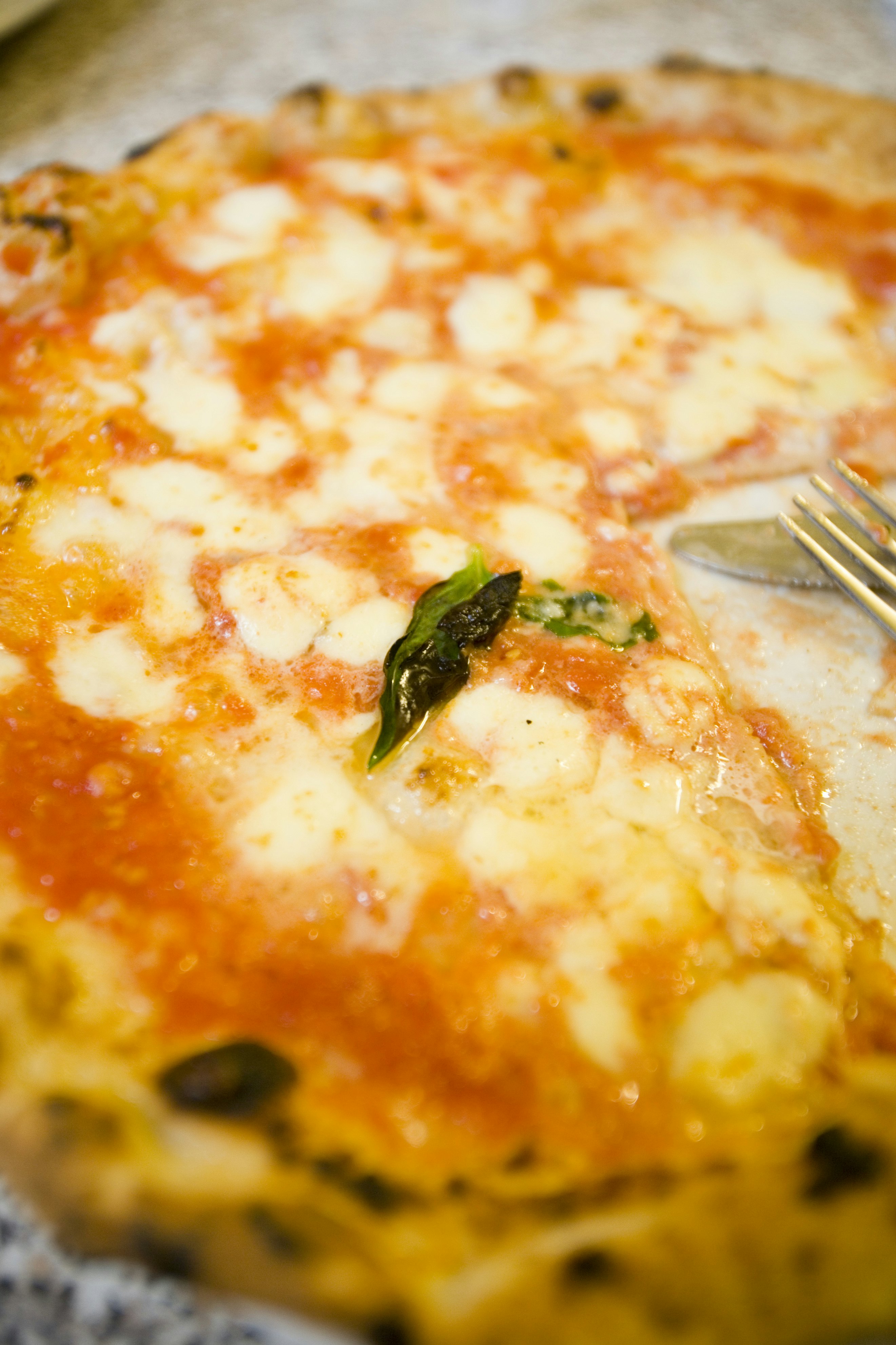
9. Take a pilgrimage to Naples, Italy, for the perfect pizza
Wander the pulsing, narrow streets of Naples and catch a whiff of its most famous food: pizza. While there are infinite numbers of ways it can be prepared, there’s one version of our worldwide food obsession that will always stand prouder than the rest: the original margherita pizza from Naples. To eat margherita here is reminiscent of a religious experience – you’ll find zealous disciples of specific restaurants.
It’s believed the worldwide phenomenon was first created when a local baker prepared dinner for the visiting King Umberto and Queen Margherita in the 19th century. Legend has it he made three pizzas, and the queen was taken with the flavors of the tomato, mozzarella and basil version, in the colors of the Italian flag. From then on, it has been named in her honor.
So where to eat it? One of the longest-standing establishments is Di Matteo. The huge, cerulean-tiled pizza oven fires out light and stretchy toasted pizzas that fly out of the door to pizza lovers on their own personal pilgrimage, and locals who appreciate the exalted position they find themselves in. If the queue is too long at Di Matteo, stroll the streets and find your own place of worship.
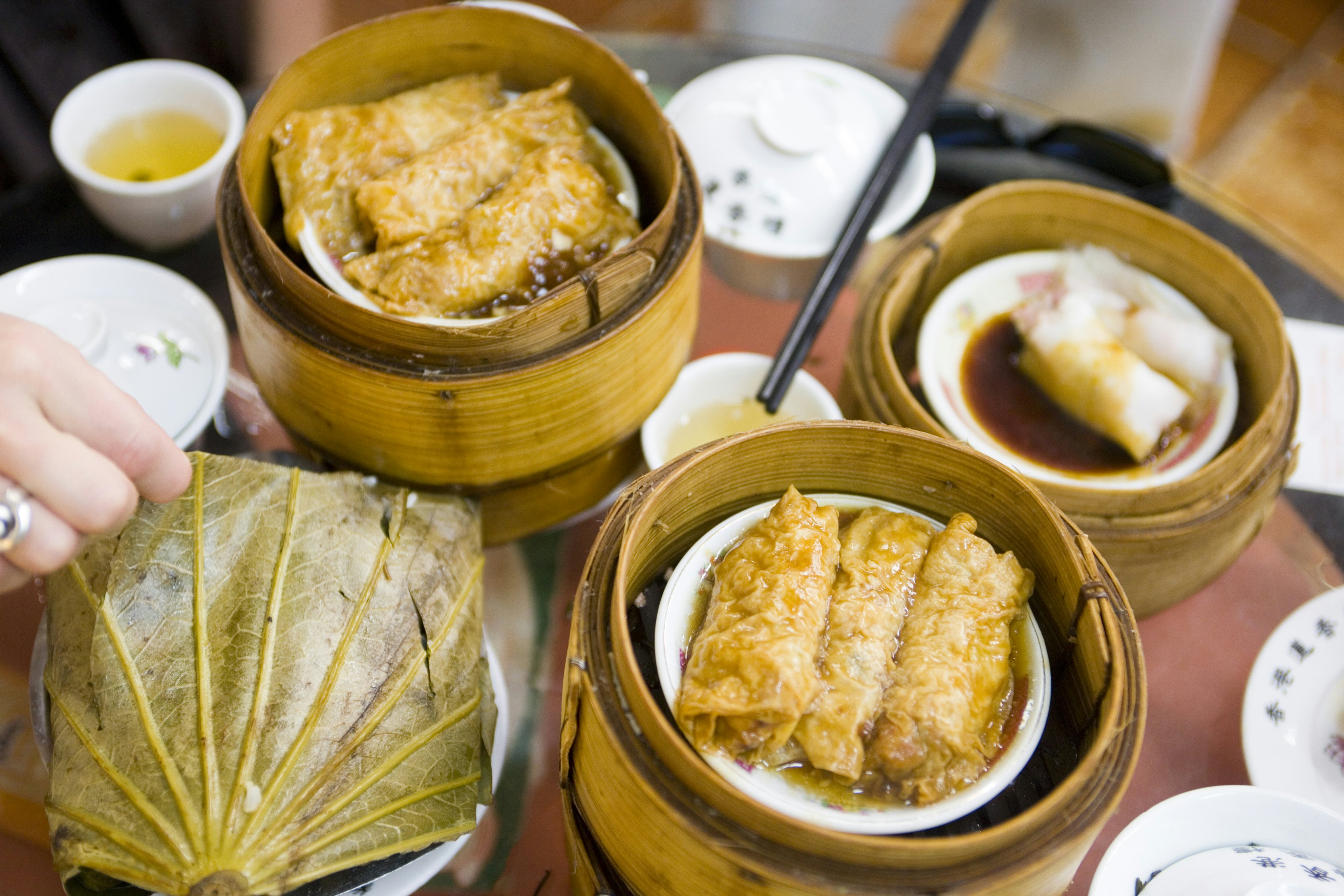
10. Snack on dim sum in Hong Kong
Dim sum (which means “light snack”) is served all over the world – but nowhere does it like Hong Kong. In fact, Hong Kong’s dim sum is a destination in itself. Dim sum (also known as yum cha, which translates to “with tea”) has evolved from the traveler ritual of stopping for tea and snacks while on the road into what might be the world’s best brunch.
In Hong Kong, you can sample dim sum as simply or as extravagantly as your predilections go. At multiple locations across town, DimDimSum does its tidbits traditionally – you’ll find that the siu mai (steamed pork dumplings), har gow (steamed shrimp dumplings) and char siu bao (BBQ pork steamed buns) are all excellent. The atmosphere is buzzing with students, travelers and lovers of dim sum on a budget.
At the other end of the spectrum are the Michelin-starred establishments like Duddell’s and Fook Lam Moon. At the painfully elegant Duddell’s, the classics are given an elaborate twist: think pork-and-shrimp dumpling with scallop and caviar, or a deep-fried pork-and-shrimp wonton with foie gras. By contrast, Fook Lam Moon’s mood is classic Cantonese, but still caters to Hong Kong society’s elite with offerings that come with small unexpected flourishes, such as the siu mai with crab roe or the steamed squid with curry sauce.
Whether jostling for elbow room at budget restaurants or sitting in elegant surroundings as silent carts glide towards your table, Hong Kong dim sum is the definitive version to try before the proverbial bucket gets kicked.













